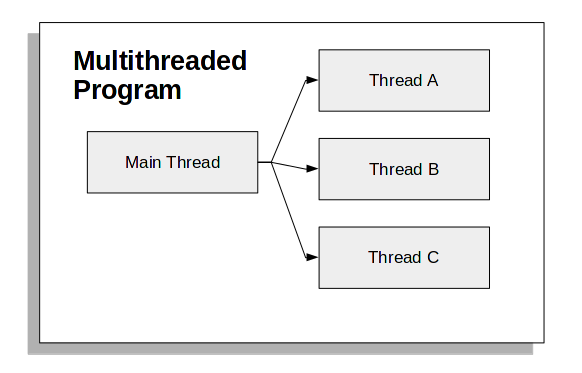Enhance your understanding of Python by delving into threading—an essential topic in any advanced-level Python curriculum. This guide provides an insightful introduction to threading in Python, ensuring that your software can execute multiple processes simultaneously for a more efficient runtime.
Threading, often termed as multithreading, facilitates parallel execution, allowing for the concurrent running of ‘multiple processes’. When you harness Python, you have the capability to spawn threads directly from your primary program.
Note: Although threading might sound like parallel execution, it’s vital to remember that it isn’t genuinely parallel. The operating system continues to execute threads in a sequential manner.
Related course: Complete Python Programming Course & Exercises
Understanding Threads
At its core, a thread is an individual stream or flow of execution. So, when you’re employing threads, it seems like your program is executing multiple tasks simultaneously. But they aren’t running exactly concurrently.
In today’s tech landscape, many processors possess multiple cores. You can dedicate a separate process to each core. While they operate on individual cores, these processes aren’t running simultaneously.
For leveraging threading in Python, one must import the threading module. Here’s how you can craft a thread:
|
The thread in the above example will initiate the execution of a function dubbed thread_function(). A sample function can be:
def thread_function(name): |
For those situations where a thread needs to be operational over prolonged periods, you can either assign it a specific duration or encapsulate it within a loop.
Threads won’t commence by themselves. The above-mentioned code merely sets up the thread. To kick off a thread, use the .start() method:
|
Below is a Python snippet, demonstrating how a thread gets activated from the primary program. It utilizes the logging module to display relevant data:
import logging |
Managing Multiple Threads
While the sample code provided only integrates two threads (the newly created one and the main thread), Python enables the initiation of numerous threads within a program.
With multi-threaded programs, multiple processes transpire concurrently, with every thread contributing towards the end-goal.
The process to commence multiple threads remains identical, as shown above:
|
However, the introduction of .join() ensures that the program waits for all threads to culminate before it terminates.
|
The join() function instructs a thread to linger until the other threads wrap up:
import logging |
Threads and Queues
Utilizing the modules threading and queue, you can initiate an array of threads. Start by crafting a queue using the Queue() function. Following this, an array of URLs is employed as parameters during thread construction.
Threads get shaped in the loop via the threading.Thread() call. For these threads to commence, you must invoke the thread.start() method. Every thread then proceeds to execute the getUrl method:
|
To visualize this, consider your main program igniting several new threads. Each of these threads runs a distinct task “concurrently”.

In essence, a Python program can incorporate an indefinite number of threads. Each thread operates on specific data, contributing towards the program’s overall objective.
